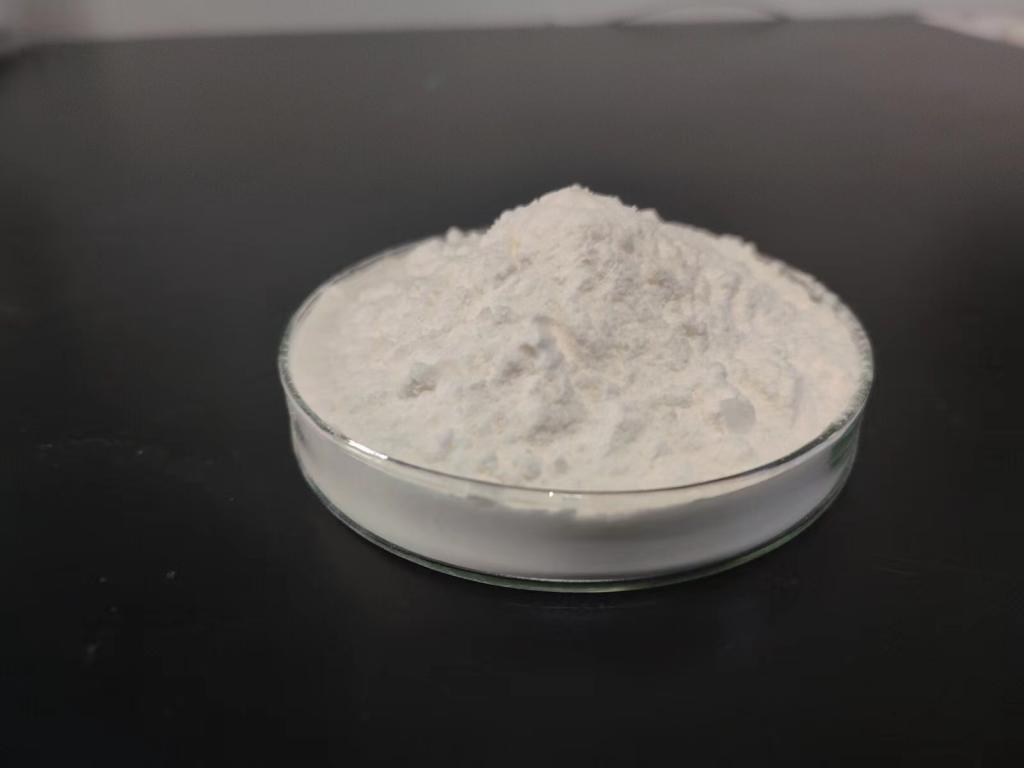Tel:0086 18231198596

News
ε-Polylysine Hydrochloride Collaboration with Nanotechnology for Enhanced Food Safety.
TIME:2023-11-10
I. ε-Polylysine Hydrochloride: An Overview
Introduction to ε-Polylysine
ε-Polylysine is a natural antimicrobial peptide derived from certain strains of Streptomyces albulus. It has been widely used in the food industry as a preservative and antimicrobial agent due to its excellent safety profile.
Mechanism of Action
ε-Polylysine hydrochloride exhibits its antimicrobial properties by disrupting the cell membranes of microorganisms. This mechanism is effective against a wide range of pathogens, including bacteria, fungi, and some viruses.
Safety Profile
One of the primary advantages of ε-polylysine is its exceptional safety profile. It is considered safe for human consumption, with no observed toxic effects, and is non-allergenic.
Biodegradability
ε-Polylysine is biodegradable, meaning it can break down into non-harmful compounds, reducing its environmental impact and supporting sustainability in the food industry.
II. Nanotechnology in Food Science
The Role of Nanotechnology
Nanotechnology involves the manipulation and control of materials at the nanoscale, typically at dimensions less than 100 nanometers. In food science, nanotechnology is applied to improve food safety, quality, and preservation.
Nanoparticles and Their Applications
Nanoparticles, such as nanoparticles of lipids, proteins, or metals, are used to encapsulate, protect, and deliver bioactive compounds and antimicrobial agents. This technology has a profound impact on improving food properties.
III. Synergy in Food Safety: Combining ε-Polylysine Hydrochloride with Nanotechnology
ε-Polylysine and Nanoparticles
The combination of ε-polylysine hydrochloride with nanoparticles allows for the controlled release of the antimicrobial agent. Nanoparticles can protect ε-polylysine, enhance its solubility, and extend its antimicrobial activity over time.
Enhanced Antimicrobial Efficacy
The controlled release of ε-polylysine from nanoparticles results in prolonged exposure to target microorganisms. This prolonged contact enhances the antimicrobial efficacy, inhibiting the growth of spoilage microorganisms and pathogens.
Targeted Delivery
Nanotechnology allows for the targeted delivery of ε-polylysine to specific food components or microenvironments within the food matrix, ensuring precise control over its antimicrobial activity.
Improved Shelf Life
The collaboration of ε-polylysine with nanotechnology can significantly extend the shelf life of food products by preventing spoilage and microbial contamination, reducing food waste and supporting sustainability.
IV. Applications of ε-Polylysine Hydrochloride and Nanotechnology
Meat and Poultry
The use of nanotechnology in conjunction with ε-polylysine can enhance the safety and shelf life of meat and poultry products, addressing challenges related to spoilage and pathogenic contamination.
Dairy Products
Dairy products can benefit from the combination of ε-polylysine and nanotechnology. The extended antimicrobial activity can prevent spoilage and maintain the quality of products such as milk, yogurt, and cheese.
Beverages
Beverages, including fruit juices and dairy-based drinks, can be improved in terms of shelf life and safety through the application of ε-polylysine and nanotechnology.
Bakery and Confectionery
Bakery and confectionery products can maintain their freshness and quality for longer periods with the use of controlled-release ε-polylysine incorporated into nanocarriers.
V. Case Studies and Success Stories
Dairy Product Preservation
Nanocarriers loaded with ε-polylysine have been effectively used in dairy products such as yogurt and cheese, prolonging their shelf life and improving safety.
Meat Preservation
Meat preservation is a critical concern in the food industry. The incorporation of ε-polylysine-loaded nanoparticles has proven successful in preventing spoilage and enhancing the safety of meat products.
VI. Regulatory Considerations and Safety
Regulatory Approvals
The regulatory status of ε-polylysine hydrochloride in conjunction with nanotechnology should be carefully evaluated to ensure compliance with food safety standards and guidelines.
Safety Assessment
The safety of nanocarriers and the release of ε-polylysine should be thoroughly assessed to address any potential concerns related to human exposure and environmental impact.
VII. Future Prospects and Challenges
Advancements in Nanotechnology
Continued advancements in nanotechnology will lead to more efficient and sustainable nanocarriers for the controlled release of ε-polylysine.
Customized Approaches
Customized approaches and formulations for specific food products will be crucial to address the unique challenges and requirements of different sectors in the food industry.
Regulatory Harmonization
Harmonization of regulatory standards and guidelines for the use of ε-polylysine and nanotechnology in food will support their adoption on a global scale.
Environmental Impact
Consideration of the environmental impact of nanotechnology in food production and preservation is essential to ensure sustainability.
VIII. Conclusion
The synergy between ε-polylysine hydrochloride and nanotechnology holds great promise for improving food safety, quality, and preservation. By harnessing the controlled release capabilities of nanocarriers, ε-polylysine can more effectively inhibit the growth of microorganisms and pathogens, extending the shelf life of a wide range of food products. As the food industry continues to address the challenges of food safety and sustainability, the collaboration between ε-polylysine and nanotechnology offers a path toward safer, higher-quality food products and a more transparent and efficient food supply chain.

 CONTACT
CONTACT




